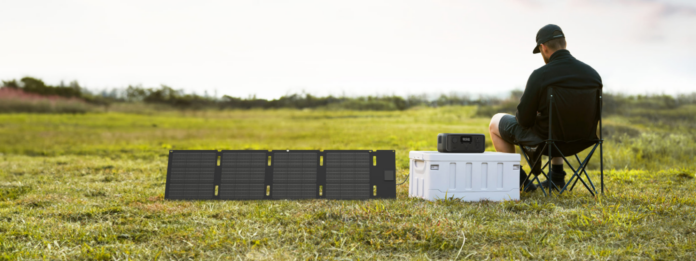Table of Contents
Staying connected is essential for safety, navigation, and convenience when heading into the great outdoors. Reliable power banks can make all the difference if you need to charge your phone, camera, or other small devices.
However, choosing the right one for your camping style requires balancing portability, capacity, and features. We will explore the different options and highlight key factors to help you choose the right one for your camping style.
Let’s dive in.
What is a Power Bank?
It is a compact, rechargeable device that stores electrical energy in a built-in battery and can be carried wherever you go. It allows you to stay connected, charge your device so you can use it for photos and GPS navigation, provide entertainment like music or videos, and use it in emergencies.
How Does a Power Bank Work?
It contains a rechargeable battery, usually lithium-ion or the newer and safer LiFePO4 batteries. These batteries store electrical energy so you can charge your devices when you don’t otherwise have access to electricity. They also contain a built-in inverter that converts the stored DC electricity into the AC electricity most electronic devices use.
They also have a charge controller that manages the charging and discharge cycles to ensure efficiency while preventing overcharging and over-discharging. Some models come with built-in or attachable solar panels that convert energy from the sun into electrical energy stored in the batteries.
Different Types of Power Banks
Universal Power Banks
Universal models are the most common devices. They have USB ports to connect charging cables and various capacities to charge mobile devices like smartphones and tablets.
Solar Power Banks
Solar models are the perfect travel companion for campers and outdoor enthusiasts. These come in a wide range of capacities to suit your needs. However, small, cheaper models sometimes may need a larger battery to give you a full charge, and none of the ones with built-in solar panels will recharge very quickly due to the limited surface area available for solar charging. Some could take days to recharge, even under optimal conditions.
This is why a small portable power station excels in comparison. For instance, the EcoFlow RIVER 2 Pro is still compact enough to fit in your backpack, but its 768Wh capacity can give you multiple recharges. If you connect portable solar panels, you can get up to 1.8kW a day to charge devices and even run small kitchen appliances. No more waiting around for days to recharge.
Wireless Power Banks
These also contain a battery for portable charging, but they use wireless charging technology. Instead of using electrical conduction via a cord, they use electromagnetic induction to generate an electric field. These are convenient options since they minimize the amount of cords you have to lose, break, or trip over.
Simply set your device on the EcoFlow Rapid Power Bank. It’s qi-certified, will recharge your device quickly and easily, and is not much bigger than your phone. Alternatively, this handy device also allows you to charge using a wired charger for multiple convenient options.
Factors to Consider When Choosing a Power Bank for Camping
Capacity
How much energy you need is a critical part of your decision. Make a list of how many devices you want to charge, and add up their watts where Watts(W) = Amps(A) x Volts(V) so that you can convert between different units. Note that a milliamp is 1/1000th of an amp, so to convert milliamps to Amps, simply divide by 1000.
A small model will be sufficient if you only need to charge a phone once. However, if you want to charge additional devices or run lights or small appliances, you will need a small solar generator with more capacity, like the EcoFlow RIVER 3 Series. You can even use it to recharge your EcoFlow Rapid Power Bank and bring both for the ultimate convenience!
Portability and Size
Since they are designed with portability in mind, they should be small and ultra-lightweight; many new models are about the size of your phone. This is essential for going on day hikes, jogging, or other outings where you cannot carry a larger battery.
However, capacity and portability are trade-offs that you must decide for yourself depending on how you want to use it. If you need more capacity, you will need a larger model that you may need to carry in your backpack instead of your pocket.
Charging Speed
Some models, especially older ones, do not offer fast charging speeds since they only have a limited output. So, if speed is a factor for you, check those specs carefully to see if it offers fast charging.
Versatile Recharge Methods
If you plan to be on the road or off-grid, choose a model with multiple input methods, such as AC wall plugs, DC car plugs, and solar charging capabilities.
Frequently Asked Questions
It depends on how long you are camping. A 5000mAh size would work for an overnight trip, and a 10,000mAh model would work for your average weekend camping trip. Bringing a small portable solar generator is the best option for those who enjoy extended off-grid adventures.
Final Thoughts
Selecting the right power bank for camping is about finding a solution that balances portability with your specific energy needs, which depends on how many devices you have and how long you plan to be off-grid.
From compact, fast wireless charging options like EcoFlow RAPID Power Banks to versatile portable energy storage solutions like the EcoFlow RIVER 3 Series, there are reliable solutions to keep your devices charged. Now, you can stay connected and powered up for any adventure.
